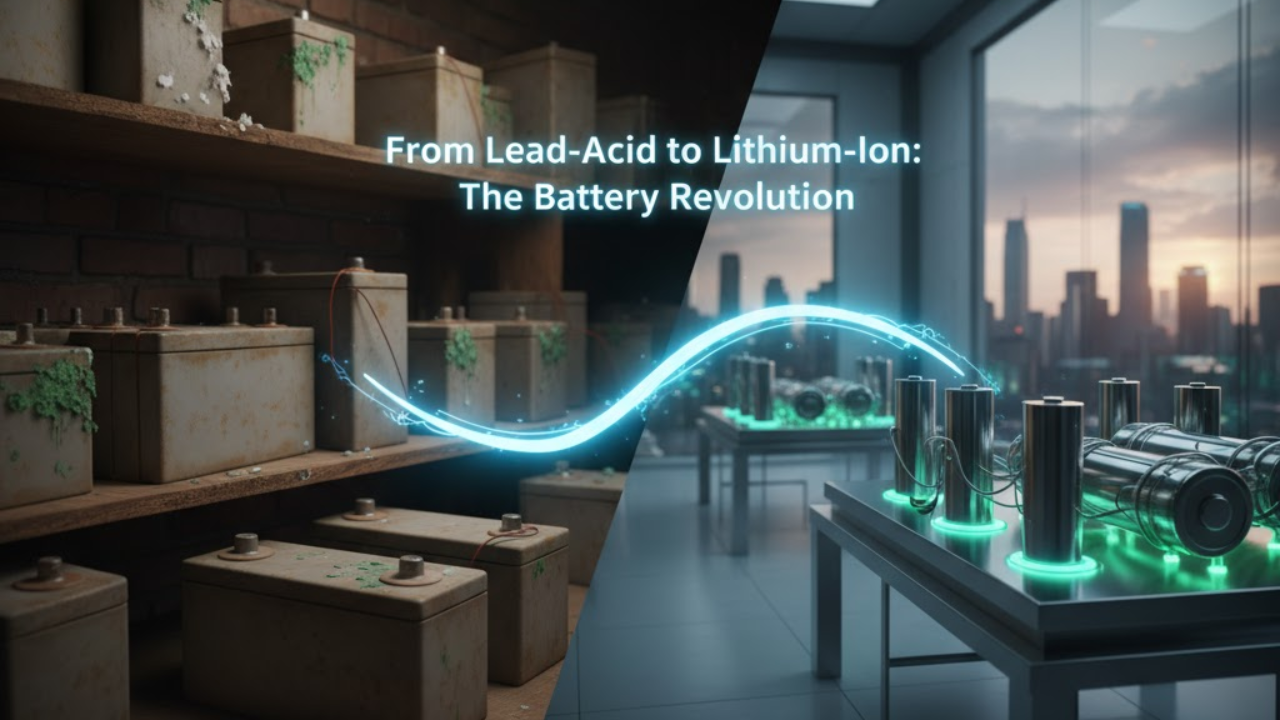
Post by : Meena Rani
It all began in 1859, when French physicist Gaston Planté invented the first rechargeable lead-acid battery. Unlike earlier cells, Planté’s design allowed electricity to be restored by reversing the chemical reaction, opening the door to repeated use. This breakthrough laid the foundation for all future rechargeable battery technologies. Over the following decades, improvements like the Faure paste process enabled mass production, making lead-acid batteries ubiquitous in rail systems, telegraphs, and early automobiles.
Lead-acid batteries offered several compelling advantages: simplicity, low cost, the ability to deliver high surge currents, and a well-understood chemistry. These traits made them ideal for automotive starters, backup power, and stationary storage systems. However, they came with serious drawbacks — low energy density, limited deep-cycle ability, gradual capacity loss (sulfation), and heavy weight. As the world moved toward mobile electronics and portable energy, the demand grew for lighter, more energy-dense solutions.
By the mid-20th century, scientists were experimenting with new chemistries like nickel-cadmium, alkaline, and zinc batteries. But none could match the combination of power and rechargeability that lithium promised. Lithium’s light atomic weight, high electrochemical potential, and small ionic radius made it ideal for high-energy storage. In the 1970s, non-rechargeable lithium batteries appeared for cameras and instruments, but the true revolution came in the 1980s when researchers developed rechargeable lithium-ion cells. John B. Goodenough’s discovery of lithium cobalt oxide (LiCoO₂) and Akira Yoshino’s work with graphite anodes ultimately led to the first commercial lithium-ion battery in 1991 — marking a new era in energy storage.
While lithium-ion later revolutionized the world, the groundwork was laid by lead-acid technology in several crucial ways:
Proof of concept for rechargeability: Lead-acid demonstrated that batteries could be reused reliably and economically.
Manufacturing expertise: The industrial infrastructure, material handling, and safety practices from lead-acid production informed future chemistries.
Benchmark performance: The limitations of lead-acid — its low energy density and short cycle life — became the goals that lithium technology sought to overcome.
Incremental innovation: Lead-acid continued to evolve with sealed AGM and gel batteries, proving that battery chemistry could adapt over time.
Lithium-ion batteries surpassed lead-acid by offering higher energy density, lighter weight, faster charging, and longer cycle life. They could store three to five times more energy per kilogram and maintain efficiency across hundreds or thousands of cycles. Their scalability made them ideal for everything from smartphones to electric vehicles to renewable energy storage systems. While more expensive initially, declining costs and mass production made lithium-ion the global standard for portable and high-performance energy applications.
Despite the dominance of lithium-ion, lead-acid batteries continue to serve vital roles. They remain the preferred choice for automotive starting, lighting, and ignition (SLI) systems, uninterruptible power supplies (UPS), telecom infrastructure, and backup energy solutions. In remote or off-grid applications, their robustness and affordability still outweigh their limitations. Ongoing innovations, such as carbon-enhanced lead-acid designs, are also improving efficiency and extending lifespan.
The modern battery industry faces new challenges and opportunities. Supply chain constraints for lithium, cobalt, and nickel have pushed researchers toward more sustainable options. Safety remains a key issue for lithium-ion, especially regarding thermal runaway. Recycling technologies are advancing to recover valuable materials and reduce waste. Meanwhile, emerging chemistries like solid-state, sodium-ion, and lithium-sulfur batteries promise to reshape the landscape yet again — just as lithium once did to lead-acid.
This article is based on verified historical records, industry research, and publicly available data as of 2025. It is intended for educational and informational purposes only and does not represent investment or technical advice. Readers are encouraged to consult professional or scientific sources for deeper technical understanding.
lead acid battery, lithium ion, battery evolution, rechargeable power, energy storage, solid state, future batteries, sustainable energy, electric vehicles, clean technology










Advances in Aerospace Technology and Commercial Aviation Recovery
Insights into breakthrough aerospace technologies and commercial aviation’s recovery amid 2025 chall

Defense Modernization and Strategic Spending Trends
Explore key trends in global defense modernization and strategic military spending shaping 2025 secu

Tens of Thousands Protest in Serbia on Anniversary of Deadly Roof Collapse
Tens of thousands in Novi Sad mark a year since a deadly station roof collapse that killed 16, prote

Canada PM Carney Apologizes to Trump Over Controversial Reagan Anti-Tariff Ad
Canadian PM Mark Carney apologized to President Trump over an Ontario anti-tariff ad quoting Reagan,

The ad that stirred a hornets nest, and made Canadian PM Carney say sorry to Trump
Canadian PM Mark Carney apologizes to US President Trump after a tariff-related ad causes diplomatic

Bengaluru-Mumbai Superfast Train Approved After 30-Year Wait
Railways approves new superfast train connecting Bengaluru and Mumbai, ending a 30-year demand, easi